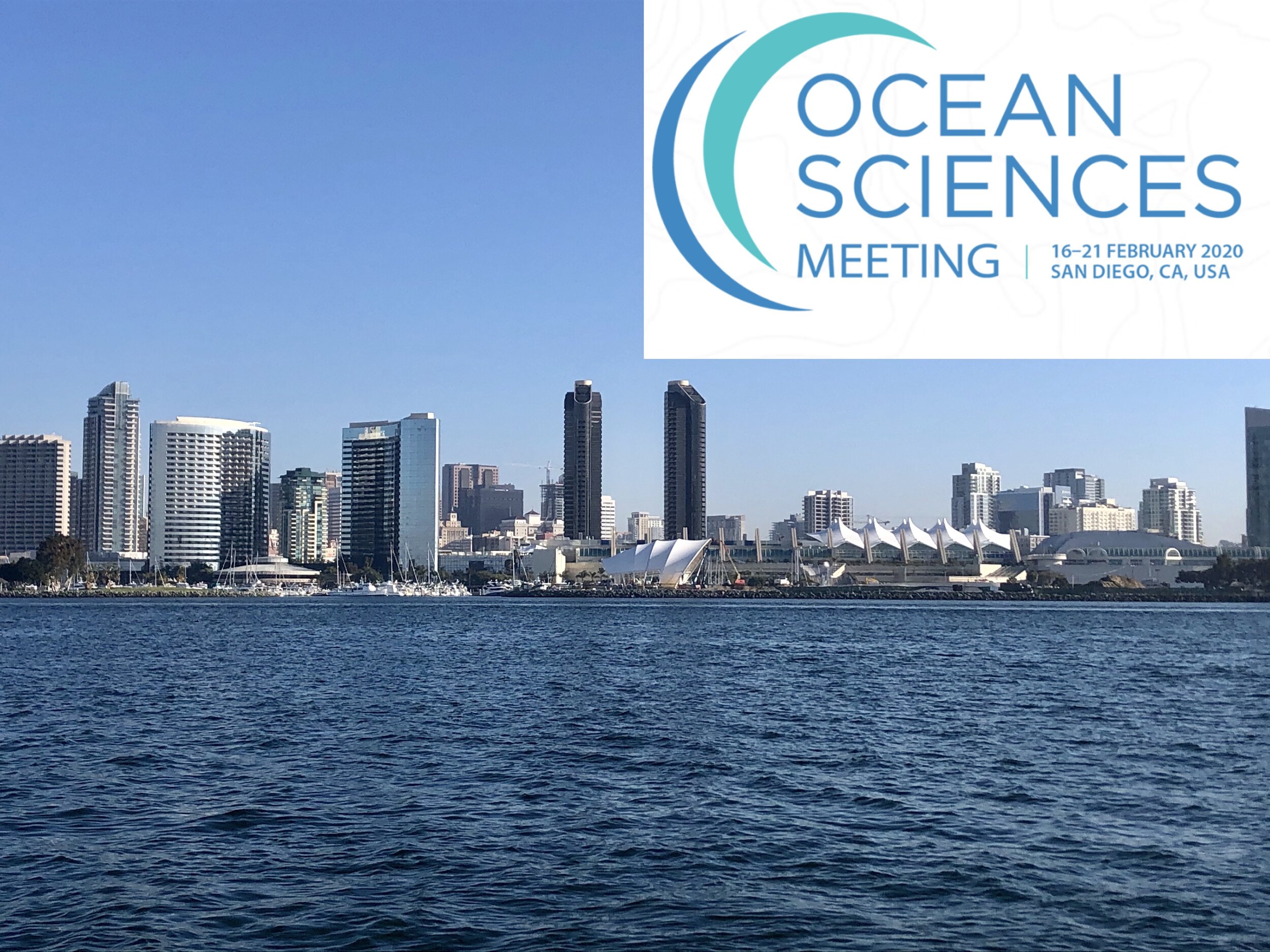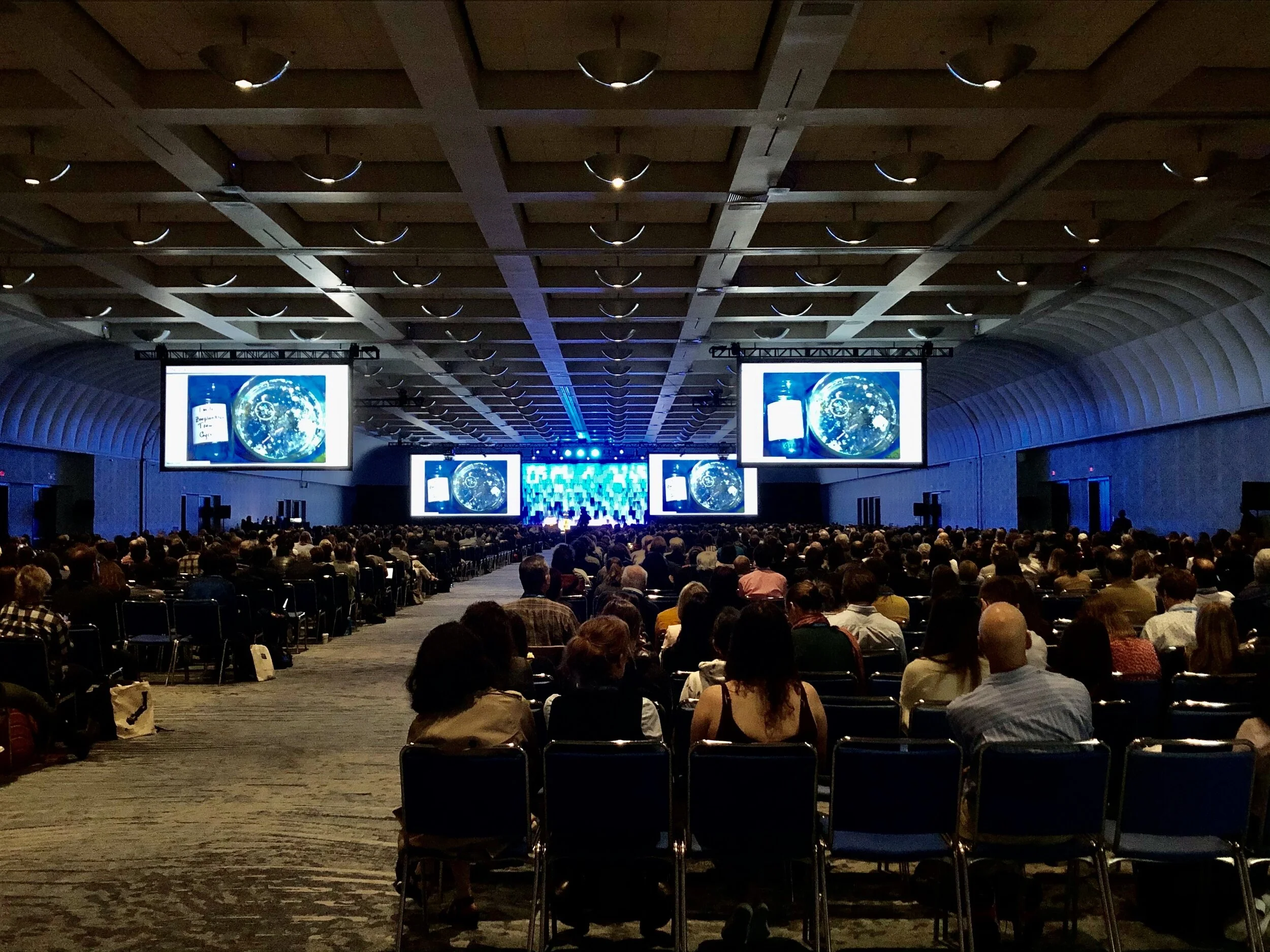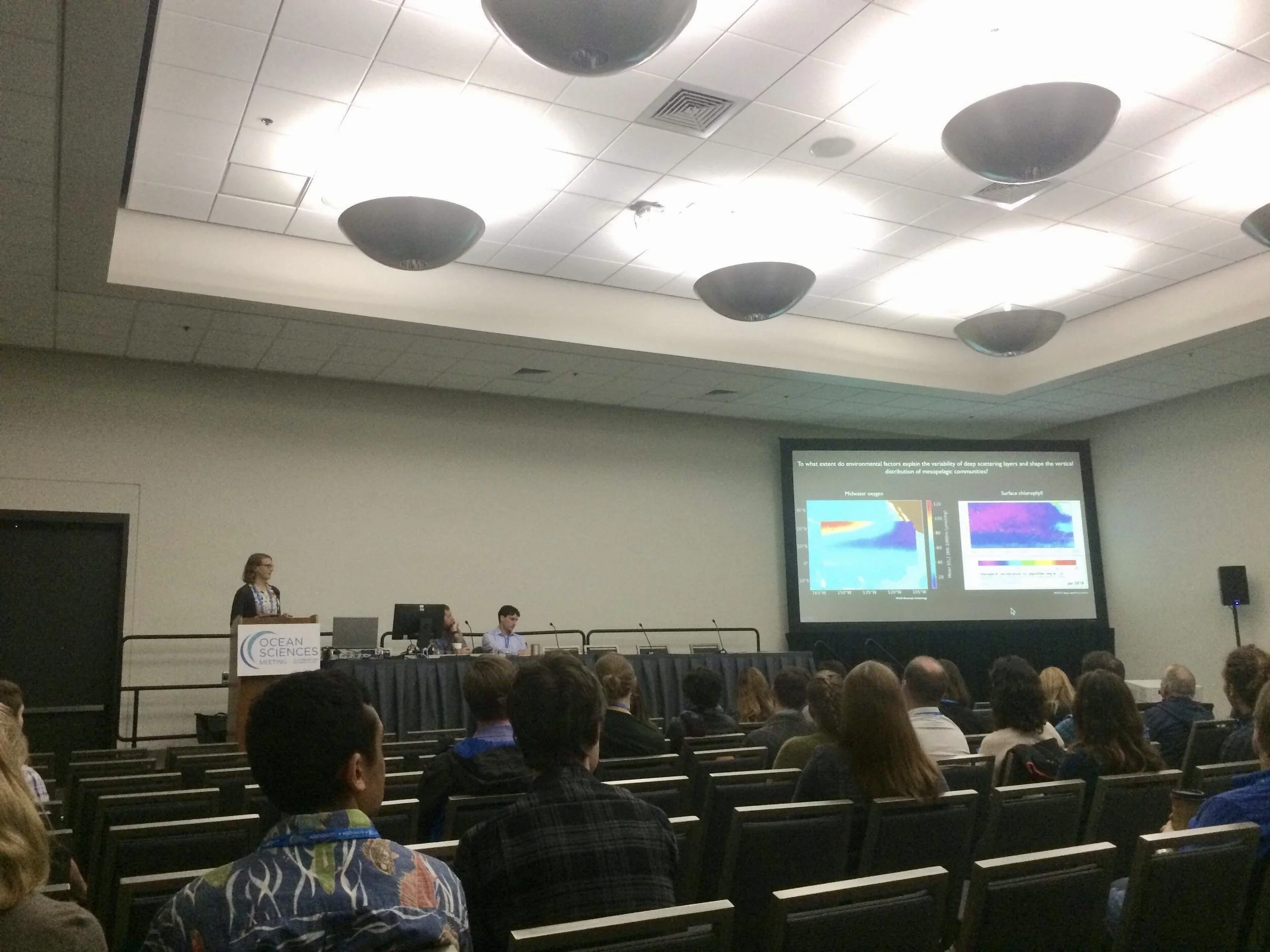Ocean Sciences: Research, exploration, and innovation
By Jessie Perelman, Safina Center Launchpad Fellow
Every two years, oceanographers and marine scientists from around the world gather at the Ocean Sciences Meeting (OSM), a broad-ranging conference that encompasses every form of research relating to the world’s oceans. Here, they highlight and discuss new insights into everything from physical and chemical oceanography, biology, geology, ocean exploration, and much, much more. This year, OSM convened in San Diego, CA in late February for a week of presentations, posters, speeches, and rich conversation about the future health of the oceans. With support from the Safina Center Launchpad Fellowship, I had the opportunity participate in the meeting and present on my research.
The biennial Ocean Science Meeting was held in San Diego, CA in late February, where more than 6,000 ocean scientists, engineers, and explorers gathered to discuss their latest ocean research. Photo: Jessie Perelman
Accommodating more than 6,000 ocean scientists, engineers, and explorers, the San Diego Convention Center was filled with the excitement of knowledge-sharing and new potential collaborations. The conference kicked off with an extraordinary plenary talk by Nainoa Thompson, president of the Polynesian Voyaging Society, about the significance of traditional ocean voyaging practices in highlighting ocean conservation and connecting societies around the globe. He left the audience with a powerful quote and some food for thought for us scientists and explorers: “What’s more dangerous…the rogue wave, the pirate, or, staying tied to the dock?’
OSM is a massive and wide-ranging conference, and as expected there was much discussion about the many threats to our oceans; plastic pollution, seafloor mining, ocean acidification, and climate change, to name a few. But the discussion topics that stood out most to me were those of optimism and excitement. In particular, several sessions and workshops focused on best practices for diversity and inclusion across academic and governmental research institutions. The genuine interest in expanding and prioritizing these efforts was extremely motivating, and I left feeling hopeful about the future and overall inclusivity of marine research. The other topics that were most fascinating to me were those focused on new technologies for ocean exploration, such as enhanced capabilities of underwater robots for recording high-definition videos and delicately collecting small animals to better understand their ecology and behavior.
During one of several powerful plenary talks, scientist Erik van Sebille spoke about the reality of plastic pollution in the Pacific Ocean’s great ‘Garbage Patch’- that the majority of this waste is comprised of microplastics, barely visible to the naked eye. Hundreds of audience members sit listening attentively. Photo: Jessie Perelman
I was invited to give a talk about my research that explores the ecology of deep-ocean animals in a session focused on new methods and discoveries in the deep ocean. During this presentation, I discussed the major significance of deep-sea animal communities (particularly small fish, squid, and crustaceans) in supporting open-ocean ecosystems, how we are using new techniques to study their behavior, and how they may be threatened by impending deep-sea mining activities across a massive region in the eastern Central Pacific Ocean (the Clarion-Clipperton Zone). The broader scientific community (and general public) do not yet seem fully aware of deep-sea mining’s potentially large-scale impacts, and my talk provided a new angle on previously overlooked deep-ocean ecosystems that was well received by fellow oceanographers at this meeting.
On the final day of the conference, I gave a talk about the major significance of midwater animal communities in supporting open-ocean ecosystems, how we are using novel techniques to study their behavior, and how they may be threatened by impending deep-sea mining activities across this massive region, the Clarion-Clipperton Zone. Photo: Jessie Perelman
By the end of the conference, with a mind full of new research ideas and networks, I took some time to reflect on the week. What most stood out is the growing sense of urgency to fully understand and prepare for the changes our oceans will face in the coming years, and to better connect the public with the importance of these changes. But, despite the threats of plastic pollution, deep-sea mining, ocean acidification, and climate change, there is still so much to explore and discoveries to be made in the world’s oceans and that curiosity is as strong as ever.



